7 Best Satellite Phones for Marine Use
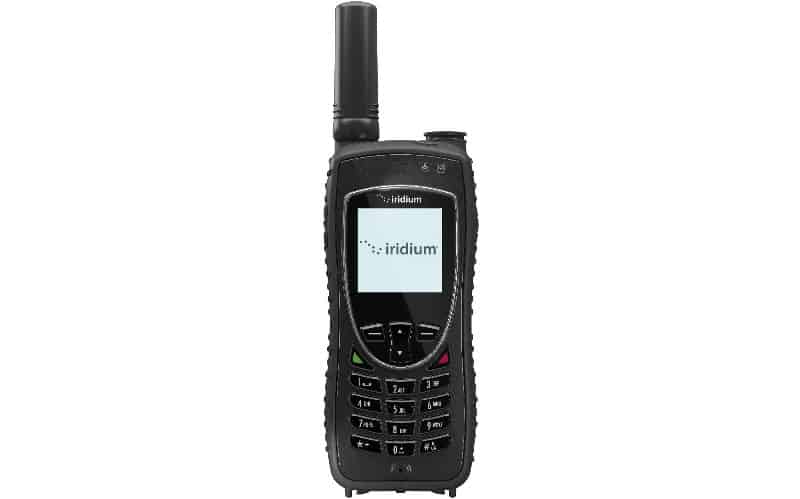
Iridium 9575 Satellite Phone
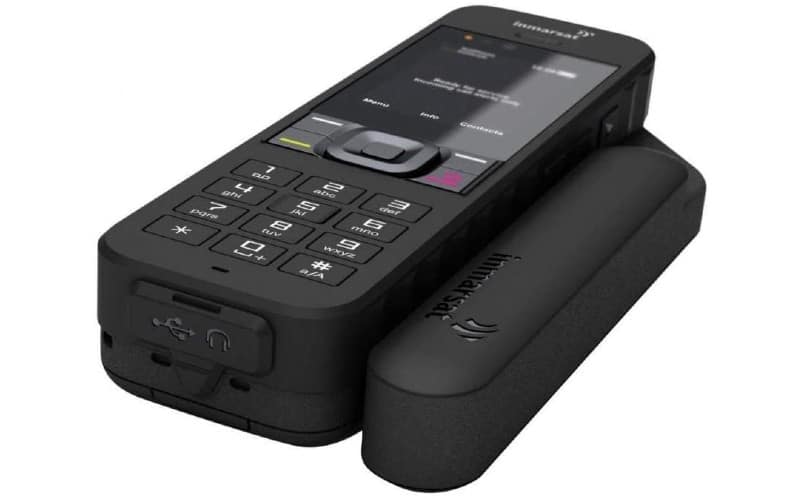
Satellite Phone Store iSatPhone 2.1
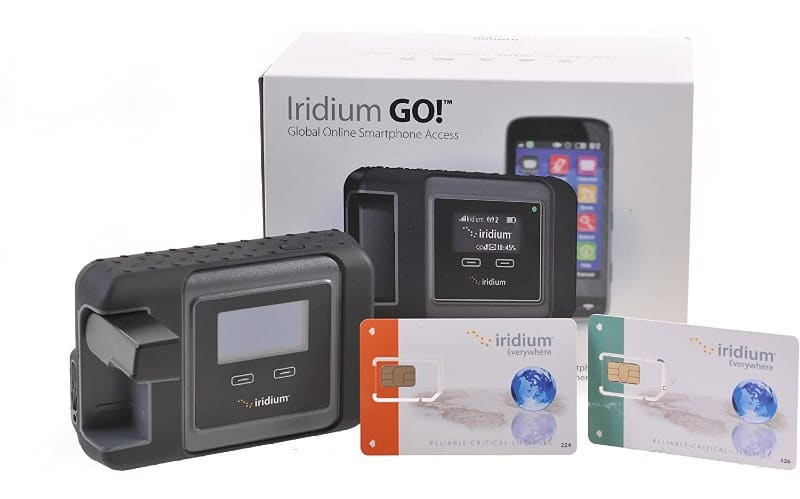
Iridium Go Sat Phone
You can never be too safe at sea. A radio and a GPS device can help you out in an emergency. But if you want to ensure you’ve got an edge, consider a satellite phone. A normal cell phone is ideal on land. But cell service is spotty at best at sea. A high quality satellite phone can get a signal in the most remote places on Earth.
A satellite phone is not a cheap purchase by any means. It’s an investment. You want to make sure you pick a good one that’s going to be reliable. Not just in terms of hardware but software and network as well. Let’s compare satellite phones so you can find the best satellite phone models available today.
Iridium 9575 Satellite Phone

The Iridium 9575 sat phone is the top of the line when it comes to satellite phones. You can buy it with prepaid and postpaid sim cards. The phone itself with no sim can be picked up as well if you want. But if you need minutes, you can buy anywhere from 150 minutes up to 1200 minutes. These also include different international regions. That means minutes you can use in Alaska and Canada, Africa, Latin America and so on.
The case is military grade and designed for extreme durability. It also features IP65 waterproofing. It can handle life on a boat without any need to worry about bumps and splashes. The keypad is also illuminated to make it easier to handle at night or in stormy conditions.
The phone features two way SMS and email capability. It also features an SOS capability on the GEOS network. That can be activated in the case of emergencies. Coast Guard or other emergency response can be alerted if you need help when in distress. The signal connects to the satellite network. Your GPS coordinates will be broadcast so help can find you as soon as possible. You get pole to pole worldwide coverage here.
The phone also features customizable GPS and online tracking. With what Iridium calls Iridium AxcessPoint it can also be used as a wi-fi hotspot. One thing to keep in mind is that this is not meant for connecting to Netflix. The connection is slow like old-school dial up Standby battery time is 30 hours. Talk time is up to 4 hours. The sat phone operates with a standard lithium ion battery.
There’s a one year warranty on the phone and a 6 month warranty for the battery. There’s a keypad and pin lock. The memory allows for a 100 number internal phonebook.
Keep in mind you want a clear view of the sky to use the sat phone. Don’t try using it below decks in the middle of a storm. It needs to be able to have some line of sight to that satellite.
Satellite Phone Store iSatPhone 2.1

The best marine satellite phone overall you’re going to find is Inmarsat’s Isatphone Pro 2. The Inmarsat network is arguably the best you’ll find for any sat phone out there. You’re looking at 99.9% coverage no matter where you go in the world. This is about the most reliable satellite network out there.
You need to purchase a plan to go with the phone before it will work, however. This model does not have a SIM card included, but that’s standard with any base handset for a sat phone. The SIM card is always an extra purchase. Minutes for airtime can be pricey and they have expiration dates so buy carefully. You can purchase minutes as you need them or buy monthly satellite phone plans.
The coverage network for the Isatphone is almost world wide. If you find yourself at the North or South pole you will not have coverage but that’s really your only limitation. Otherwise you’re free to travel the globe and not worry about coverage and roaming charges.
With 8 hours of talk time in a single battery charge, Inmarsat’s lithium ion batteries prove to be superior to most satellite phone models. Some phones only manage half that talk time. When not in use your battery can keep the phone powered on standby for up to 160 hours.
The handset itself is built to handle its globe hopping reputation. The handset is IK04 shock resistant so if you drop it, don’t panic too much. It should handle the stress. It’s also IP65 rated against dust and even water jets. That means marine use is right up this phone’s alley. Temperatures can range from -20C to +55C (-4F to +131F). It’s also able to handle extreme humidity up to 95%. Basically this phone is designed to handle anywhere on Earth a human could go.
Like many others, this features a one-button SOS feature. It also offers GPS location and even Bluetooth.
In the box you’re getting the IsatPhone 2 satellite phone handset itself. You’ll also find a lithium-ion battery and an international AC wall charger with international plugs. For travel there’s a car DC charger and a holster with a belt clip. They also include a hands free earpiece and lanyard. In addition you get a USB cable plus a USB thumb drive with documentation. It comes with a 1 year manufacturer warranty.
One of the big reasons this phone stands above many others is the 24/7 support from the Satellite Phone Store. That’s global support for free with a live expert when you need it. Pound for pound, this is the best sat phone you can invest in.
Iridium Go Sat Phone

The Iridium network is rock solid and that’s why they keep showing up on the list. This Iridium Go unit is pretty unique and makes for a good choice for someone looking to save a few dollars. That doesn’t mean it’s cheap by any means but it may be more affordable than some premium options. It also offers you the freedom to keep your normal smartphone. Basically this is not a satellite phone at all but a connection to a satellite network for your everyday phone. It’s an adapter that upgrades your phone, which is pretty cool.
Once you’ve left the terrestrial network of your phone behind, connect it to the Iridium Go. Flip up the antenna and it connects your phone to the Iridium Leo satellite network. It also turns your device into a wi-fi hotspot with a radius of about 100 feet. From there, up to five devices can be connected with the Go app.
Iridium Go allows for voice calls, email, text messaging, GPS tracking and more. It has a built-in SOS function for emergencies as well. This allows you to transmit your location via GPS coordinates to emergency crews.
One of the best features of the Iridium Go is its size. When they say pocket sized, they mean it. It only weighs just over 2 lbs and is very unobtrusive. Because it works with your phone instead of replacing it, you can even mount it on your boat for safe keeping. Or just keep it stored somewhere safely until needed.
Like other Iridium devices the case is made to military grade durability standards. If it hits the ground, it will probably endure it with no issues. It’s IP65 waterproof so it can handle life on the water fairly well.
The unit works with most popular smartphones. Android and Apple devices should have no issues connecting. The satellite network is one of the most extensive in the world and offers almost total coverage. You can also buy the unit as is or with airtime included. Remember, airtime does cost a bit but the rates on the Iridium network can be reasonable.
The main thing you need to remember is that this makes your phone operate as a satcom device. That means internet and text ability is not going to be up to par with terrestrial usage. The internet access is not blazing fast and text/email is limited to 1140 characters. Internet speeds are about 2.4 kbps. As an emergency tool for communication it’s great, however.
Thuraya XT-Lite
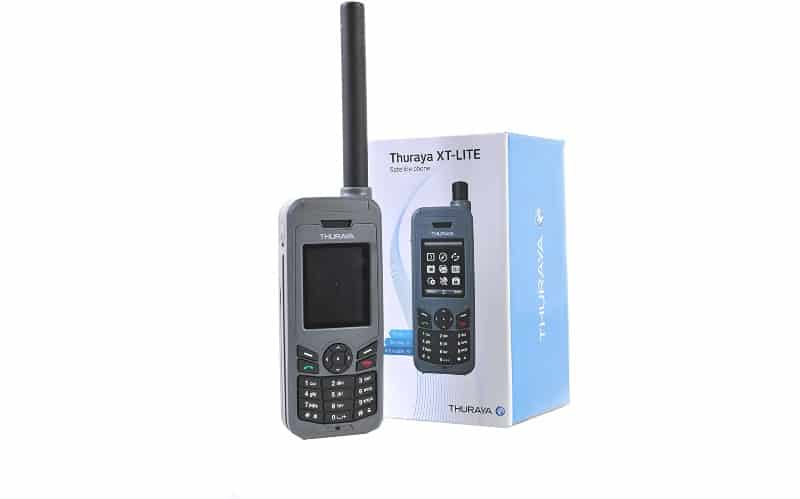
Available with Nova SIM or standard SIM, this sat phone from Thuraya is a solid choice. That’s only if you’re leaving the Western hemisphere, however. If you’re looking for a reliable phone at a lower price point, you should be able to get what you need out of this model. Of course, when we say lower price point it’s still up there. No satellite phone is cheap by any means. If you see one that’s $200 or less, you should be very suspicious of why it’s priced so low.
Why is Thuraya so cheap but not our budget choice? Limited functionality. They offer coverage in Europe, Asia and parts of Africa but not North and South America. That greatly diminishes where many people are going to find use for it. That said, in the regions it does work, the satellite functionality is top notch.
The box comes with the phone itself plus the battery. You’ll also get a travel charger including 4 adaptors for EU, UK, AUS, China. There’s a USB Cable, a quick-start info sheet and a user manual in 13 languages.
We do have some worries about the charge port. The little rubber flap meant to seal it does not look entirely reliable. If this thing drops in the water you may have some issues. For that reason, you may want to look into some kind of case that can help keep it waterproof just in case.
Battery life offers up to 6 hours of talk time, which is above average. On the downside, it looks like standby time is a little less than you might expect. The battery may fade on you in under 30 hours. So keep that in mind if you take this model out and make sure you keep it charged when not in use.
Inmarsat ISatPhone Pro 2 Satellite Phone
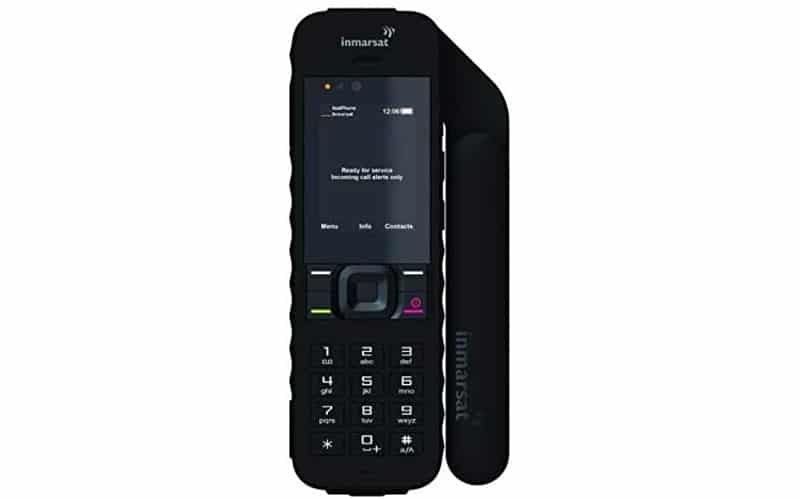
Hopefully this entry isn’t too confusing because you’ll notice it looks a lot like our best overall choice. And that’s because the hardware is exactly the same. This is the Inmarsat Isatphone 2 again. There are two differences between the one we already showed you and this one. First, the other one is technically the 2.1 phone, not the 2 like this one. It was released in 2021 so it’s slightly updated in terms of some software and the like. The more significant difference is that this is provided through an independent vendor. That’s different than the Satellite Phone Store like the other.
Battery power is a real stand out for this phone. It stands head and shoulders above a lot of the competition. Talk time is an impressive 8 hours. Reserve time is a whopping 160 hours.
In terms of durability you have a solid handset here. It’s rugged and can take a bit of a beating. And if you’re worried about how it might last at sea, don’t be. It’s IP54 water and dust resistant.
There are a number of airtime options available with this sat phone as well. You can start with a blank, prepaid SIM with no minutes if you prefer. Or you can purchase them in units. 50 units offer you 33 minutes of time. 2500 units gives you 1,667 minutes. Keep in mind that these prepaid minutes have a limited lifespan. If there’s one drawback to most satphones, this is it. For the Inmarsat, 33 minutes of time will expire after 30 days. But the lifespan does increase the more minutes you pick up. 5000 units will last for a year. Keep this in mind before purchasing. You wouldn’t want to waste money on minutes you don’t use. Also, keep in mind, you may be able to buy airtime from different vendors for different prices.
In the box you’re going to find a standard Lithium-ion battery and international plug kit. There’s also a DC charger and a Holster. Additionally, you get a hands-free earpiece, lanyard, USB cable and a Quick start guide. Finally you get a SIM card and a 1 year manufacturer’s warranty.
Iridium 9555 Sat Phone
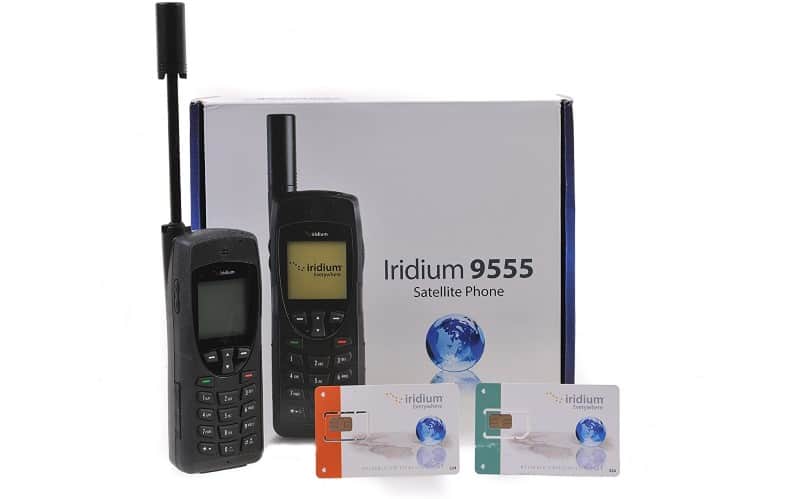
Another Iridium phone, the 9555 is a great choice for solid coverage. The Iridium satellite network really has no equal. It features 66 low earth orbit satellites. The global coverage is so good you can use this phone at the North Pole.
Battery life for the Iridium 9555 is not suited for a lot of long trips. Not without making plans to keep charging the phone. Talk time is about 4 hours. Standby, however, is only 30 hours. That makes it a weak battery compared to some. It’s a shame too because the network is so good. Iridium could really stand to invest in some new battery technology . That will keep them competitive in that field. Still, that’s only one aspect of an otherwise top quality phone.
The handset itself is tough and made to industrial standards. If you get onto rough seas and it hits the deck, it should survive with no problems. It offers hands-free function so you can focus on other issues in an emergency as well. The interface for this phone is pretty easy to get the hang of. Some sat phones can be confusing. Iridium has obviously tried to work out those issues.
Like other Iridium phones you’ll get the lithium-ion battery. There’s also a USB cord, an adapter antenna and the headset. It also comes with a data CD, AC travel charger and an international plug kit. Reliability is top of the line when it comes to Iridium.
Spot X 2 Satellite Messaging
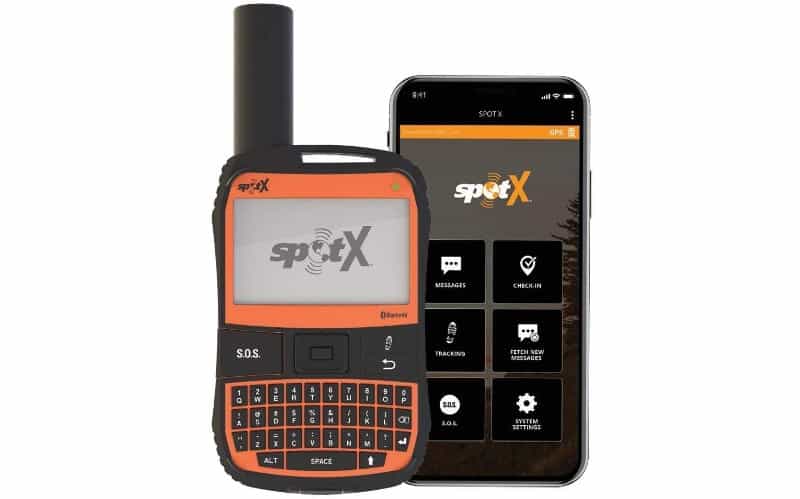
This entry is a bit of a curveball. The Spot X 2-way satellite messaging device is not a phone. It looks vaguely like one but it doesn’t offer voice calling capability. So why is it on the list? It does offer the ability to communicate over a satellite network. More importantly, it’s designed to keep you safe.
You can send and receive messages over the Spot X. That’s from any phone number or email address. It features a one-touch SOS button to send your location to search and rescue. It also features GPS tracking. It updates your position based on intervals of your choosing. Update your location once every 60 minutes, 30 minutes, 10 minutes, 5 minutes, even 2.5 minutes. There’s also a check in feature to let friends and family know you’re OK. It also features a built-in compass and programmable waypoints.
The handset is impact dust and water resistant (IP67). In tracking mode with 10 minute updates on your position, the long battery life will last for an impressive 10 days. If you’re ever truly lost, this is a great tool to have. And it comes at an affordable price compared to true sat phones. If you need a tool for emergency tracking and messaging without the bells and whistles, this is it.
Choosing the Best Satellite Phones
There’s a reason we always recommend VHF radio over cell phones on boats. Not only do VHF radios have dedicated channels for emergencies, they work much better at sea. But a sat phone has a connection to a satellite network. This means it can connect anywhere at any time. A normal cell phone is connected through a terrestrial network of cell phone towers. You need to be in range of towers in order to have a connection to the network. Thus, a sat phone is a superior choice at sea.
Normally a VHF radio can keep you covered at sea. But if your radio or antenna gets damaged, it may not function. You can suffer issues with range and poor weather can also ruin a VHF radio’s abilities. Also, power issues can cause a radio to fail on you. For those reasons, a reliable satellite phone back up can be the difference between life and death. Choosing the right sat phone requires a little research and preparation, though. Our marine satellite phone reviews hopefully helped. Let’s take a look at the features and specs that make a satellite phone an ideal choice for your boat.
Battery Life
One of the most important aspects of a sat phone is the battery life. Because a satellite phone is typically used for emergencies, it’s often left to sit. You may not have cause to pick your phone up for quite a while. That means it may sit and slowly lose battery life over time. In addition, if you do use it, the battery life may drain quickly. Talk time on a satellite phone may only be two or three hours.
Two to three hours may be fine for a chat on a cell phone. But a sat phone is for emergencies. If your vessel has capsized and you’re in a lifeboat, rescue may be a long time coming. That two to three hours can be eaten up before the Coast Guard is able to find you.
For these reasons, you want to pay close attention to power sources. Methods of charging the phone are very important. You want to make sure it’s fully charged when you head out. But if you can charge it on the fly, that’s also important. If there is an ability to charge it with solar power then that can be a real upside. Also, having a spare battery pack can also be important. Just keep in mind that, in an emergency, you’ll likely only have room and time to grab so many things. So really, you need to strike a balance.
Remember that temperature can affect battery life as well. Cold batteries and hot batteries are not as reliable as batteries within a normal temp range. Some phones are better insulated than others so keep that in mind when you head out. If you know you’re going to be in the frigid north, consider something that will insulate the batteries. Likewise in sweltering heat.
Durability
Any phone can benefit from durability. Most of us have endured a dropped phone that resulted in a busted screen. But a sat phone needs increased durability. And given how much a sat phone costs, you’d expect nothing less. You need to find one with a quality, rugged case. On a boat, things can get unsteady. You run the risk of dropping the phone at any moment. Likewise, rough seas could simply dislodge it from wherever it’s stored. For that reason, you need a phone that can take some bumps with no worries.
Size
Some sat phones are remarkably bulky. This is especially true of older models. In many circumstances this isn’t an issue. But space is always at a premium on a boat. You have limited storage space even in ideal circumstances. In an emergency, you’ll have limited time and space to grab things.
Waterproofing
This one seems like a no-brainer but it’s very important. Not every sat phone is intended for use at sea. If a sat phone isn’t waterproof, it’s not very good for marine purposes. Consider that this is a tool intended for safety and emergency use. You need a phone that can handle rain and waves splashing over it. In an abandon ship situation, this could be totally unavoidable. Some of our choices have exceptional waterproofing up to IP67.
Reliable Satellite Network
As much as we point out why a sat phone is better than a cell phone, it’s very conditional. You can’t consider a sat phone reliable unless it has a reliable satellite network. Some networks only have limited coverage. Depending on where you go boating, not every satellite phone will pay off for you. This could be either in international waters or in certain countries. Make sure you check ahead of time to see what kind of coverage a phone offers.
Satellites for sat phones are typically located in a low earth orbit. They can be located somewhere between 500 miles and 1000 miles above the planet. That’s why they can still be reliable even in the worst weather. The satellites are high above any atmospheric conditions. The sorts of things that affect terrestrial communications methods. Always make sure you research the network that the sat phone works on to ensure it will meet your needs.
Remember that data access is usually very limited with even top satellite phones. While they offer excellent global communication, data services will be slow.
Extra Features
Satellite phones aren’t just telephones. Cell phones aren’t just telephones. When’s the last time any phone you bought was “just” a telephone, right? There are many extra features that come with sat phones if you go looking.
Many sat phones come with an SOS function that can really come in handy during an emergency. You need to subscribe to a dedicated service in order for this function to work. That typically means a monthly or yearly subscription fee. Most sat phone providers offer these kinds of services if you’re interested.
When activated, the SOS services alerts emergency services that you are in distress. Like an EPIRB, it transmits your coordinates over the satellite network. Your location can be traced with GPS coordinates and emergency crews will be able to find you.
A subscription from a company like GEOS can give you coverage is 140 countries around the world
GPS functionality is available on many sat phones as well. These do not have to be tied to the SOS features. In many instances they can be used to identify your location for emergency crews, of course. But it can also help you determine your location for your own needs. This means it can also help friends or family locate you as well.
Internet connectivity is also available on many sat phones as well. Most phones require a subscription to their service to access these features. A number of apps can be used in conjunction with sat phones also.
One thing worth keeping in mind is that some sat phones need to work with a smartphone. One of our recommendations is a device like this, in fact. It’s not a phone on its own. There’s no keypad or handset. Instead, it needs to be attached to the phone itself to allow it to connect to the satellite network. It’s essentially like adding a satellite antenna to your normal phone. That also means you have access to all of your normal phone features. This includes all of your apps, contacts and more.
Sat Phone Cost
Obviously we’ve shown you options for buying sat phones here. But what if you don’t think you need a sat phone all the time? Satellite communications may end up costing you well over $1000. If you simply want to use one for a single trip as an emergency backup, there may be options.
Using a sat phone is also something that comes with fees. You’ll have to buy minutes to use with most sat phones. Some will have them included when you first buy the phone. However, if you need to pay for more, they are typically not cheap. A call on a sat phone can often cost anywhere from 25 cents to $2 per minute. If you use a sat phone to connect your normal phone to make a call it can cost much more. In some cases we’re looking at over $10 a minute, so be wary.
The Bottom Line
Using a satellite phone is a great backup plan. That’s compared to more standard communications methods on a boat. You never want to be caught without a way to contact rescuers in an emergency. Sat phones ensure that you will always have a way to get word out when you need it. Hopefully you’ll never need it, but if you do make sure you get the best sat phone to meet your needs. As always, stay safe and have fun.
Categories: nauticalknowhow











